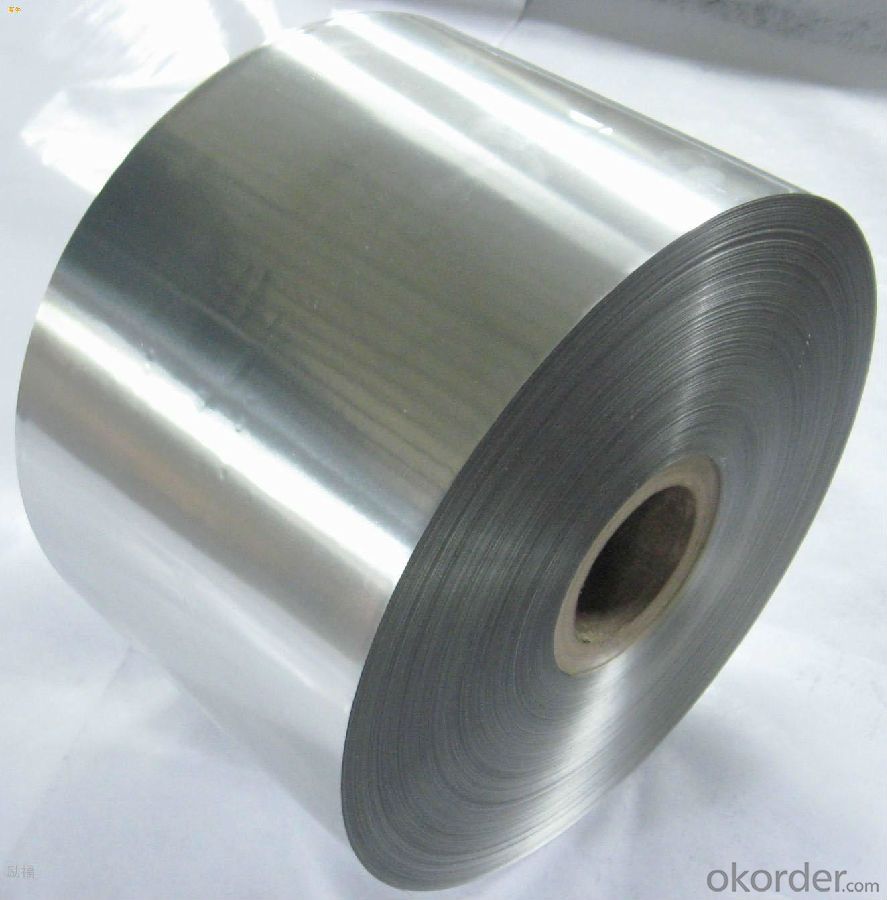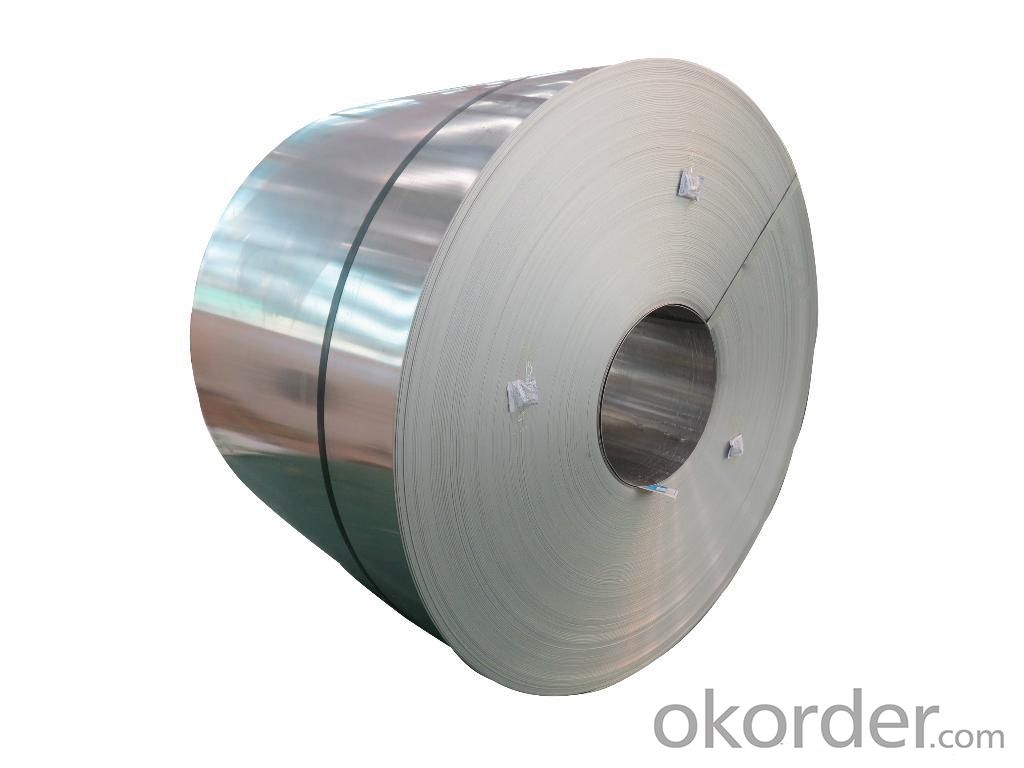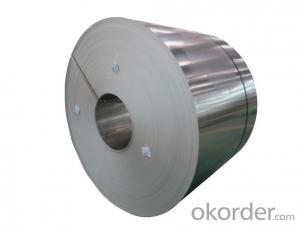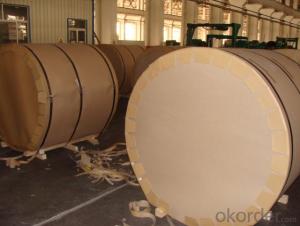AA3xxx Mill-Finished Aluminum Coils D.C Quality Used for Construction
- Loading Port:
- Shanghai
- Payment Terms:
- TT OR LC
- Min Order Qty:
- 5 pc
- Supply Capability:
- 10000 pc/month
OKorder Service Pledge
OKorder Financial Service
You Might Also Like
Item specifice
1.Structure of AA3xxx Mill-Finished Aluminum Coils D.C Quality Used for Construction Description
AA3xxx Mill-Finished Aluminum Coils D.C Quality Used for Construction has great ductility, heat conductivity, anti-corrosion and moisture resistance properties.
AA3xxx Mill-Finished Aluminum Coils D.C Quality Used for Construction is widely used for electronics, instruments, lighting decoration, packing industry, house decoration, curtain wall, honeycomb-core panel, sandwich panel, aluminum composite panel and aluminum composite pipes.
2.Main Features of AA3xxx Mill-Finished Aluminum Coils D.C Quality Used for Construction
• Superior quality of raw material
• Reasonable and stable chemical composition
• Accurate tolerance
• Goode mechanical property
3.AA3xxx Mill-Finished Aluminum Coils D.C Quality Used for Construction Images



4.AA3xxx Mill-Finished Aluminum Coils D.C Quality Used for Construction Specification
Alloy | AA3xxx (AA3003, AA3105 etc.) |
Temper | H14, H16, H18, H22, H24, H26, H32, O/F |
Thickness | 0.2mm -- 100mm |
Width | 30mm -- 1700mm |
Standard | GB/T 3880-2006,EN,ASTM,JIS |
5. FAQ of AA3xxx Mill-Finished Aluminum Coils D.C Quality Used for Construction
A.How to guarantee the quality?
Customers are welcome to our mill to visit and check the products. Besides, we can arrange a third party to test AA3xxx Mill-Finished Aluminum Coils D.C Quality Used for Construction.
B.When will you deliver the products?
AA3xxx Mill-Finished Aluminum Coils D.C Quality Used for Construction will be delivered within 35 days after receiving advanced payment or original L/C.
- Q:Are there any specific regulations or standards for using aluminum profiles in certain industries?
- Yes, there are specific regulations and standards for using aluminum profiles in certain industries. Aluminum profiles are widely used in various industries such as construction, transportation, aerospace, and manufacturing. These industries have specific requirements and standards that must be met to ensure the safety, performance, and quality of the products or structures that incorporate aluminum profiles. In the construction industry, for example, the use of aluminum profiles in windows, doors, curtain walls, and building facades must comply with building codes and regulations. These codes specify the required strength, fire resistance, energy efficiency, and structural integrity of the aluminum profiles used in these applications. In the transportation industry, aluminum profiles are commonly used in the manufacturing of vehicles, including cars, trucks, trains, and airplanes. There are regulations and standards set by organizations such as the Department of Transportation (DOT) and the Federal Aviation Administration (FAA) that govern the use of aluminum profiles in these applications. These regulations ensure that the aluminum profiles used in transportation are strong, lightweight, and meet safety requirements. The aerospace industry also has specific regulations and standards for aluminum profiles used in aircraft manufacturing. Aluminum profiles used in aircraft must meet stringent requirements for strength, durability, corrosion resistance, and fire resistance. Organizations like the FAA and the European Union Aviation Safety Agency (EASA) establish guidelines and standards to ensure the safe and reliable use of aluminum profiles in the aerospace industry. Manufacturing industries also have their own set of regulations and standards for using aluminum profiles in various applications. These standards often relate to the quality and dimensional tolerances of the aluminum profiles, as well as any specific requirements for their use in manufacturing processes or equipment. Overall, the use of aluminum profiles in certain industries is subject to specific regulations and standards to ensure compliance with safety, performance, and quality requirements. These regulations help to ensure that aluminum profiles are used in a manner that is safe, reliable, and meets the specific needs of the industry in which they are employed.
- Q:Can aluminum profiles be used in solar reflector systems?
- Yes, aluminum profiles can be used in solar reflector systems. Aluminum is a commonly used material in solar reflector systems due to its high reflectivity, durability, and lightweight properties. It can effectively reflect sunlight onto solar panels or other target areas, making it suitable for solar energy applications.
- Q:How do you clean and maintain aluminum profiles?
- Here are some straightforward steps to clean and maintain aluminum profiles: 1. Begin by eliminating loose dirt or debris from the aluminum profiles' surface using a soft brush or cloth. 2. Create a cleaning solution by combining warm water with mild dish soap or a non-abrasive cleaner. Avoid using harsh chemicals or abrasive cleaners since they can harm the aluminum finish. 3. Immerse a gentle cloth or sponge into the cleaning solution and delicately scrub the aluminum profiles, ensuring that all corners and crevices are thoroughly cleaned. 4. Rinse the profiles with clean water to remove any soap residue. You can accomplish this by using a hose or a bucket of water. 5. Dry the aluminum profiles entirely using a soft, lint-free cloth. This will prevent the formation of water spots or streaks. 6. For routine maintenance, you can employ a specialized aluminum cleaner or polish to restore the shine and safeguard the surface. Follow the product instructions for optimal outcomes. 7. It is crucial to refrain from using abrasive scrubbers, steel wool, or harsh chemicals as they can scratch or damage the aluminum finish. Additionally, never apply acidic cleaners or vinegar on aluminum since they can cause corrosion. 8. If you happen to notice any scratches or minor damages on the aluminum profiles, you can employ a touch-up paint specifically designed for aluminum to repair them. Follow the manufacturer's instructions for application. Always remember that regular cleaning and maintenance will aid in preserving the appearance and longevity of your aluminum profiles.
- Q:What are the different types of corner connectors used with aluminum profiles?
- Aluminum profiles commonly utilize several types of corner connectors for joining. These connectors facilitate the creation of diverse structures like frames, enclosures, and shelving units. One prevalent corner connector is the 90-degree angle bracket. It possesses a right angle shape with holes on each side to accommodate screws or bolts for fastening the profiles together. The 90-degree angle bracket is adaptable and suitable for various applications. Another corner connector is the 45-degree angle bracket, similar to the 90-degree angle bracket but designed for a 45-degree angle joint between profiles. It finds use in applications requiring slanted or angled structures. T-slot corner connectors are also popular. They have a T-shaped slot for easy insertion of profiles. These connectors are ideal for applications that prioritize adjustability and flexibility, allowing for effortless repositioning and modification of the structure. Some corner connectors are specifically designed for particular profile types, such as the end cap connector. This connector caps off the profile's end, providing a polished appearance and protection against damage. Furthermore, various other corner connectors exist, including corner gussets, angle plates, and corner brackets. Each connector type offers unique features and advantages, catering to different applications and requirements. In summary, the assortment of corner connectors available for aluminum profiles offers a wide range of options for joining and assembling structures. These connectors provide strength, stability, and versatility, making them indispensable components in aluminum profile-based construction projects.
- Q:Are there any fire safety considerations when using aluminum profiles?
- Fire safety considerations must be taken into account when utilizing aluminum profiles. Although aluminum is not combustible, it can still contribute to the spread and intensity of a fire. Aluminum profiles, particularly in construction or industrial settings, can act as fuel for a fire and potentially worsen its severity. One crucial consideration is the fire rating of the aluminum profiles. Fire ratings indicate how long a material can withstand fire exposure before failing. It is vital to choose aluminum profiles with appropriate fire ratings that match the specific application requirements. This guarantees that the profiles can delay the fire's spread, providing valuable time for evacuation and firefighting efforts. Another consideration is the use of suitable insulation materials. Aluminum profiles are often used in building facades, curtain walls, and other structural applications. In these cases, it is important to ensure that the insulation materials used with the aluminum profiles are fire-resistant. This prevents the fire from spreading through the building envelope and reduces the risk of structural failure. Furthermore, fire safety measures should be implemented during installation. Proper firestopping techniques should be applied to seal any gaps or penetrations around the aluminum profiles. This prevents flames, smoke, and hot gases from passing from one compartment to another, limiting the fire's spread. Regular maintenance and inspection of the aluminum profiles are also crucial for fire safety. Any damage or deterioration should be promptly addressed to prevent potential fire hazards. Additionally, adequate fire detection and suppression systems should be in place to detect and control fires in a timely manner. Overall, although aluminum profiles themselves are not combustible, it is imperative to consider various fire safety measures when using them in construction or industrial applications. By selecting suitable fire-rated profiles, using fire-resistant insulation materials, employing proper installation techniques, and conducting regular inspections, the risk of fire can be minimized, ensuring the safety of occupants and property.
- Q:How are aluminum profiles insulated?
- There are several methods available to enhance the thermal performance of aluminum profiles. One way is to incorporate a thermal break into the profile design. This involves inserting a non-conductive material, such as polyamide or polyurethane, between the inner and outer parts of the profile. By doing so, heat transfer between the interior and exterior of a building is minimized, resulting in improved energy efficiency. Another approach to insulating aluminum profiles is to apply insulating materials, such as foam or rubber, to either the interior or exterior surfaces of the profile. These materials act as barriers, reducing heat transfer and providing additional insulation. Additionally, insulating gaskets or seals can be fitted to aluminum profiles. These gaskets, typically made of rubber or other insulating materials, are positioned between the profile and the glazing. They create a thermal barrier, preventing heat loss or gain. In summary, the insulation of aluminum profiles can be achieved through the incorporation of thermal breaks, the application of insulating materials, or the use of gaskets. These methods effectively minimize heat transfer and enhance the energy efficiency of buildings.
- Q:Can aluminum profiles be used for curtain wall systems?
- Yes, aluminum profiles can be used for curtain wall systems. In fact, aluminum is one of the most commonly used materials for curtain wall construction due to its numerous advantages. Aluminum profiles offer excellent strength and durability, making them capable of supporting the weight of large glass panels. Additionally, aluminum is highly resistant to corrosion, which is essential for exterior applications where the curtain wall is exposed to various weather conditions. Moreover, aluminum profiles can be easily extruded into various shapes and sizes, allowing for design flexibility and customization. The lightweight nature of aluminum also makes it easier to handle and install, reducing labor and transportation costs. Furthermore, aluminum is a sustainable material as it is recyclable, contributing to the overall sustainability of the curtain wall system. Overall, aluminum profiles are a suitable choice for curtain wall systems due to their strength, durability, corrosion resistance, design flexibility, and sustainability.
- Q:What are the different surface etching options for aluminum profiles?
- There are several different surface etching options available for aluminum profiles. These options can be used to achieve various aesthetic and functional results. 1. Chemical Etching: This is a common technique that involves applying a chemical solution to the aluminum surface to selectively remove the top layer of material. Chemical etching can create intricate patterns, logos, or text on the aluminum profile. 2. Electrochemical Etching: Also known as electrolytic etching, this method uses an electric current to etch the aluminum surface. Electrochemical etching can create precise and permanent markings on the profile, making it ideal for labeling and identification purposes. 3. Anodizing: Anodizing is an electrochemical process that creates a protective layer of oxide on the aluminum surface. This layer can be further enhanced by etching, which creates a matte or textured finish. Anodizing with etching is commonly used to improve corrosion resistance and provide a decorative appearance. 4. Laser Etching: Laser etching uses high-powered lasers to selectively remove material from the aluminum surface. This technique allows for precise and detailed markings or patterns without the need for physical contact. Laser etching is often used for branding, serial numbers, or decorative designs. 5. Mechanical Etching: Mechanical etching involves physically scratching or engraving the aluminum surface using tools like rotary cutters or diamond-tipped styluses. This method allows for deeper and more pronounced etchings, resulting in a tactile and visually appealing texture. It is important to consider the specific requirements, end-use, and desired outcome when choosing a surface etching option for aluminum profiles. Each technique offers unique advantages and limitations, so it is recommended to consult with a professional or an experienced etching service provider to determine the most suitable option.
- Q:Where is the aluminum profile market in Tianjin?
- Fen Shui Dao aluminum tube, aluminum strip,,,Tianjin Hongyuan Aluminum Co. ltd..Main business products: industrial aluminum series and its accessories, aluminum accessories, aluminum frame, table, line, standard, European standard and non-standard aluminum industrial profiles and accessories, free drawings analysis, drawing and mold production, a series of industrial aluminum frame, assembly line etc..
- Q:What are the reasons for the large number of products in the aluminum profile cutting machine after opening?
- Possible saw blades, what kind of saw blades do you use, and aluminum profiles?
1. Manufacturer Overview |
|
|---|---|
| Location | |
| Year Established | |
| Annual Output Value | |
| Main Markets | |
| Company Certifications | |
2. Manufacturer Certificates |
|
|---|---|
| a) Certification Name | |
| Range | |
| Reference | |
| Validity Period | |
3. Manufacturer Capability |
|
|---|---|
| a)Trade Capacity | |
| Nearest Port | |
| Export Percentage | |
| No.of Employees in Trade Department | |
| Language Spoken: | |
| b)Factory Information | |
| Factory Size: | |
| No. of Production Lines | |
| Contract Manufacturing | |
| Product Price Range | |
Send your message to us
AA3xxx Mill-Finished Aluminum Coils D.C Quality Used for Construction
- Loading Port:
- Shanghai
- Payment Terms:
- TT OR LC
- Min Order Qty:
- 5 pc
- Supply Capability:
- 10000 pc/month
OKorder Service Pledge
OKorder Financial Service
Similar products
New products
Hot products
Related keywords






























